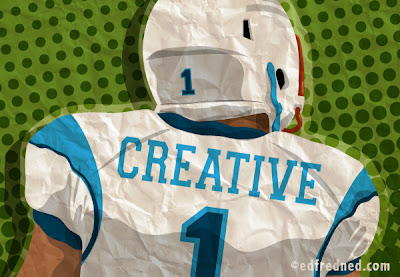If you haven't heard of Artist
As Brand® - here is a brief introduction. Founder Greg Spalenka (award-winning,
inspirational artist) gives us a brief introduction to his career
enhancing program to help artists connect their talent to their marketing. Greg says, "The Artist As Brand mission is to empower an artist's authentic purpose and prosperity". Everything about Greg's program is in line with my own commitment to this industry - supporting artists to find their true passion and make a living doing so. I'm thrilled Greg is sharing this and future posts with us.
What do Michelangelo, Coco Chanel, Sinatra, Andy Warhol, Clint
Eastwood, Auguste Rodin, Meryl Streep, Frida Kahlo,
Picasso, Damien Hirst, Mozart, Michael Jackson, Henry Moore, Maxfield Parrish, Ray Bradbury, Joseph Beuys,
and Madonna, all have in common?
They are all brands.
Generally when people think of what a brand is they conjure up
images of corporate products or logos from companies, however the true essence
of this word goes deeper.
For artists it has more meaning than you may realize.
BRAND
[brand]
–noun and verb
1. kind, grade, or make, as indicated by a stamp, trademark, or
the like.
2. a mark made by burning or otherwise, to indicate kind, grade,
make, ownership, etc.
3. a kind or variety of something distinguished by some
distinctive characteristic.
4. to impress indelibly.
5. a brand name.
In the beginning, before multi-national corporations, before
boards of directors, before mergers and franchises and takeovers, there were
family businesses founded on individual enterprise or invention. Before the
corporate image or the company logo, there was the individual name stamped on a
product, a service, a labor saving device, or a form of entertainment, usually
because it was the proud handiwork of one individual.
A brand is a purpose transformed into a product or service that
connects to people, the planet, and beyond. The key word here is purpose,
and specifically your purpose relating to the personal vision of your art. This
is where the heart of your essence resides, where your most potent art
manifests, and the strength of your perseverance matures. The purpose inside
you aligned with your personal vision is the foundation of your creative power.
When your heart is joined with your art, a vital one of a kind signature is
formed. This brand is unique to you and your intimate product.
All visionary creators throughout time who have made their mark on
humanity are brands. They are remembered for their impact on the collective
consciousness of the planet and many are household names. Imagine making art
that touches an audience so deeply, they not only support your vision
financially but they show their appreciation by promoting your ideas too for
the rest of your life, even after death. That is the power of a committed
purpose.
Over a lifetime a successful creative mind can burn a series of
meaningful marks into the mindset of a generation, but if their passion is
great it is possible to start a fire that contributes a brighter light to the
world.
Peace and passion,
Greg Spalenka
 |
| Greg Spalenka |
Greg Spalenka, Founder of Artist As Brand® started his award
winning career as an artist after graduating from Art Center College of Design,
Pasadena, California in 1982. Moving to New York City he began a twenty eight
year journey illustrating for America’s most prominent publishers of books,
magazines, and newspapers.
As a concept designer he has worked
on feature CG animated and live action films such as The Ant Bully, The Golden Compass, The Voyage of the DawnTreader.
In addition to gallery exhibitions, Spalenka has created or aligned with companies
to manufacture limited editions of his art as books, printed items, music,
jewelry, and other products.
Spalenka also teaches, lectures and conducts workshops at
colleges, universities, art institutions around the country and abroad.
Exhibiting at the San Diego Comic Convention for the last twenty years inspired
some of the principles now taught in the Artist As Brand®
Workshop and Workbook. Currently he is focused on presenting Artist As
Brand® workshops, and finishing a myriad of projects from interactive books to
music.






